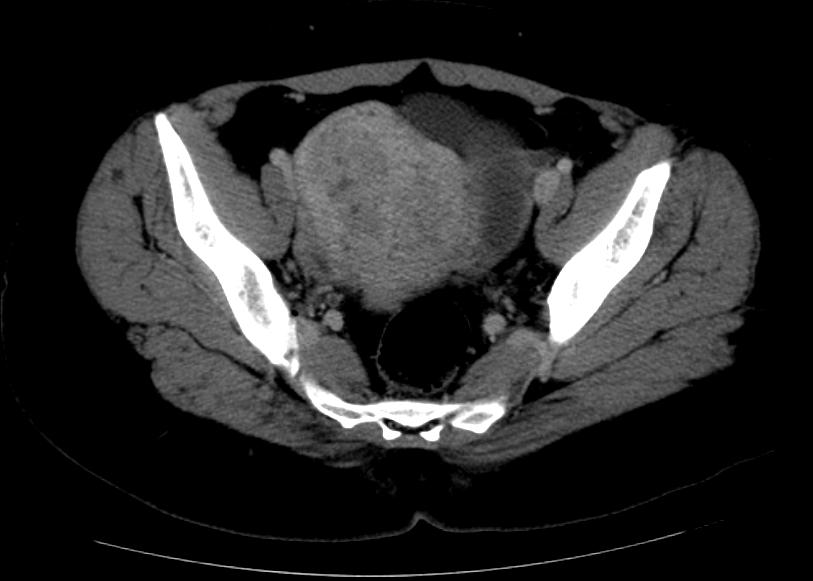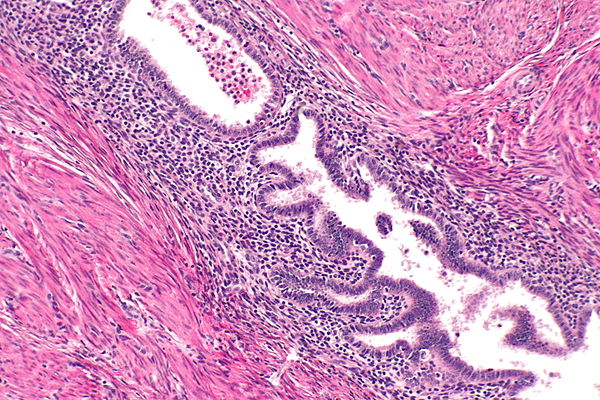Adenomyosis, often abbreviated as AD, is a condition that affects the uterus and can significantly impact a woman’s quality of life. It occurs when the tissue that normally lines the uterus grows into the muscular wall of the uterus. This abnormal growth can lead to an enlarged uterus, heavy menstrual bleeding, and severe menstrual cramps. Understanding this condition is essential for women who may be experiencing symptoms or seeking information about reproductive health.

What is Adenomyosis?
Adenomyosis is a medical condition characterized by the invasion of endometrial tissue, which lines the inside of the uterus, into the myometrium, the muscular layer of the uterus. Unlike endometriosis, where similar tissue grows outside the uterus, adenomyosis involves the internal infiltration of the uterine wall. This condition is most commonly diagnosed in women in their forties and fifties, though it can occur at any age.
The exact prevalence of adenomyosis is difficult to determine because many cases go undiagnosed. Some women may experience mild symptoms or no symptoms at all, while others face debilitating pain and other complications. The condition is often discovered during procedures such as hysterectomies or imaging studies performed for other reasons.
Types of Adenomyosis
- Focal Adenomyosis: This type involves localized areas of abnormal tissue growth within the uterine wall.
- Diffuse Adenomyosis: In this form, the abnormal tissue spreads throughout the uterine wall, leading to a more generalized enlargement of the uterus.
Causes of Adenomyosis
The precise cause of adenomyosis remains unknown, but several theories have been proposed to explain its development. These include:
Hormonal Factors
Hormones play a significant role in the development of adenomyosis. Estrogen, progesterone, and other hormones regulate the menstrual cycle and influence the growth of uterine tissue. Women with adenomyosis often have higher levels of estrogen, which may contribute to the abnormal growth of endometrial tissue into the uterine wall. Additionally, hormonal imbalances may exacerbate symptoms and progression of the condition.
Inflammation and Injury
Inflammation within the uterine lining may also contribute to the development of adenomyosis. Surgical procedures such as cesarean sections or other uterine surgeries can cause trauma to the uterine wall, potentially leading to the invasion of endometrial tissue into the muscle layer. Chronic inflammation from conditions like pelvic inflammatory disease may further increase the risk.
Genetic Predisposition
Some evidence suggests that genetics may play a role in the development of adenomyosis. Women with a family history of the condition may be at a higher risk. Researchers are exploring specific genetic markers that could help identify individuals predisposed to developing adenomyosis.
Symptoms of Adenomyosis
Adenomyosis can present with a wide range of symptoms, and the severity of these symptoms varies from person to person. Some women may experience mild discomfort, while others face severe pain and other complications. Common symptoms include:
Heavy Menstrual Bleeding
One of the hallmark symptoms of adenomyosis is heavy menstrual bleeding. Women with this condition often report soaking through sanitary products quickly, requiring frequent changes. This excessive bleeding can lead to anemia, causing fatigue, weakness, and shortness of breath.
Severe Menstrual Cramps
Painful menstrual cramps are another common symptom. The cramps associated with adenomyosis are often described as more intense and prolonged than typical menstrual cramps. This pain may radiate to the lower back or legs and can interfere with daily activities.
Enlarged Uterus
As the condition progresses, the uterus may become enlarged due to the thickening of the uterine wall. An enlarged uterus can cause a feeling of fullness or pressure in the lower abdomen. In some cases, the uterus may grow to double or triple its normal size.
Pain During Intercourse
Many women with adenomyosis experience pain during sexual intercourse, known as dyspareunia. This pain can occur due to the increased sensitivity and inflammation of the uterine tissues.
Other Symptoms
- Irregular menstrual cycles
- Prolonged menstrual bleeding
- Pelvic pain unrelated to menstruation
Diagnosis of Adenomyosis
Diagnosing adenomyosis can be challenging because its symptoms overlap with those of other conditions, such as fibroids and endometriosis. A combination of methods is often used to confirm the diagnosis.
Medical History and Physical Examination
A healthcare provider will begin by taking a detailed medical history and performing a physical examination. During the pelvic exam, the doctor may notice an enlarged or tender uterus, which can raise suspicion of adenomyosis.
Imaging Studies
Imaging techniques such as ultrasound and magnetic resonance imaging (MRI) are commonly used to visualize the uterus and detect abnormalities. Transvaginal ultrasound is often the first-line imaging tool, providing detailed images of the uterine wall. MRI is more sensitive and can provide clearer images, making it particularly useful for confirming the diagnosis.
Biopsy
In some cases, a biopsy may be necessary to rule out other conditions. However, adenomyosis is typically diagnosed based on imaging findings rather than biopsy results, as the condition involves deep tissue infiltration that may not be easily sampled.
Treatments for Adenomyosis
There is no cure for adenomyosis, but various treatment options are available to manage symptoms and improve quality of life. The choice of treatment depends on the severity of symptoms, the patient’s age, and whether she wishes to preserve fertility.
Medications
Several medications can help alleviate symptoms and slow the progression of adenomyosis:
- Hormonal Birth Control: Oral contraceptives, patches, and vaginal rings can regulate menstrual cycles and reduce heavy bleeding and pain.
- Gonadotropin-Releasing Hormone Agonists: These medications temporarily suppress ovarian function, reducing estrogen levels and shrinking the uterine lining.
- Nonsteroidal Anti-Inflammatory Drugs (NSAIDs): Over-the-counter pain relievers like ibuprofen can help manage menstrual cramps and pelvic pain.
Minimally Invasive Procedures
For women who do not respond to medications, minimally invasive procedures may be recommended:
- Uterine Artery Embolization: This procedure involves blocking the blood vessels that supply the uterus, reducing blood flow and shrinking the abnormal tissue.
- Endometrial Ablation: This technique destroys the uterine lining to reduce heavy menstrual bleeding. It is not suitable for women who wish to become pregnant.
Surgical Options
In severe cases, surgery may be necessary:
- Hysterectomy: The surgical removal of the uterus is the only definitive treatment for adenomyosis. It is typically reserved for women who have completed childbearing and whose symptoms significantly impair their quality of life.
Lifestyle Modifications
In addition to medical treatments, certain lifestyle changes can help manage symptoms:
- Applying heat to the abdomen to relieve pain
- Engaging in regular exercise to improve circulation and reduce stress
- Maintaining a healthy diet rich in iron to prevent anemia
Living with Adenomyosis
While adenomyosis can be a challenging condition to live with, many women find relief through a combination of treatments and lifestyle adjustments. Open communication with healthcare providers is crucial for developing an effective management plan. Support groups and online communities can also provide valuable resources and emotional support for women navigating this condition.





